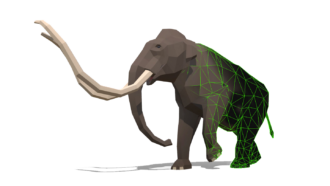HS-LS4-4
Construct an explanation based on evidence for how natural selection leads to adaptation of populations.
-
 Animals
AnimalsCougars pushed out by wildfires took more risks around roads
After an intense burn in 2018 in California, big cats in the region crossed roads more often. That put them at higher risk of becoming roadkill.
-
 Fossils
FossilsSprinting reptiles may have been forerunners of soaring pterosaurs
A new analysis of an old fossil supports the idea that winged pterosaurs evolved from swift and tiny two-legged ancestors.
-
 Animals
AnimalsSea creatures’ fishy scent protects them from deep-sea high pressures
TMAO’s water-wrangling ability protects a critter’s critical proteins — including muscle — from crushing under deep ocean pressures.
-
 Animals
AnimalsHow boa constrictors squeeze their prey without strangling themselves
Tracking boas’ ribs in X-ray videos revealed the snakes’ squeezing secrets. It’s the latest Wild Things cartoon from Science News Explores.
By Maria Temming and JoAnna Wendel -
 Health & Medicine
Health & MedicineExplainer: What is mpox (formerly monkeypox)?
Once rare, the viral disease monkeypox exploded onto the global scene for the first time in 2022.
By Tina Hesman Saey and Janet Raloff -
 Plants
PlantsThis pitcher plant lures insects into underground deathtraps
Scientists didn’t expect the carnivorous, eggplant-shaped pitchers to be sturdy enough to grow embedded in the soil.
By Meghan Rosen -
 Tech
TechVirtual critters evolve bodies that help them learn
A combination of evolution and learning may lead to more intelligent and agile robots.
-
 Animals
AnimalsA dog’s breed doesn’t say much about its behavior
Many people associate dog breeds with specific behavioral traits. But breed appears to account for only about 9 percent of behavioral differences.
By Anna Gibbs -
 Tech
TechSmartphones can now bring Ice Age animals back to ‘life’
Scientists bring Ice Age creatures to life with augmented reality. You can view these creatures in your own world on a smartphone.
By Laura Allen -
 Animals
AnimalsThe scent of queen ‘murder hornets’ can lure males into traps
Traps baited with compounds found in the mating pheromone of hornet queens attracted thousands of males.
-
 Animals
AnimalsSurprise! Sixteen tiny wasp species found masquerading as one
Scientists used new and old tools to overturn 160-year-old ideas about this wasp. They show you can’t tell a wasp by its looks.
-
 Fossils
FossilsDinos may have had the sniffles 150 million years ago
A respiratory infection that spread to air sacs in the vertebrae of a sauropod dinosaur likely led to the dino's now-fossilized bone lesions.
By Sid Perkins